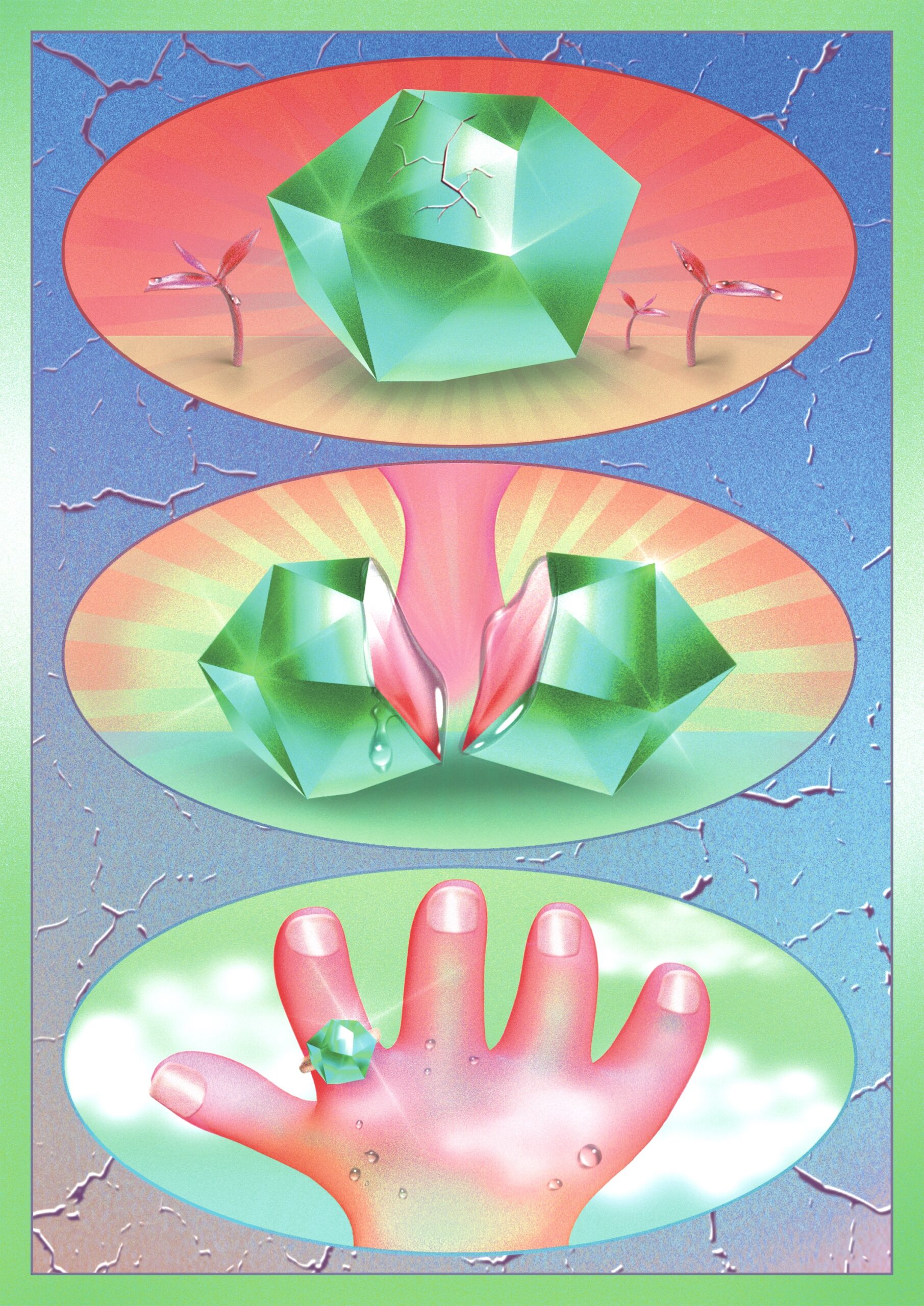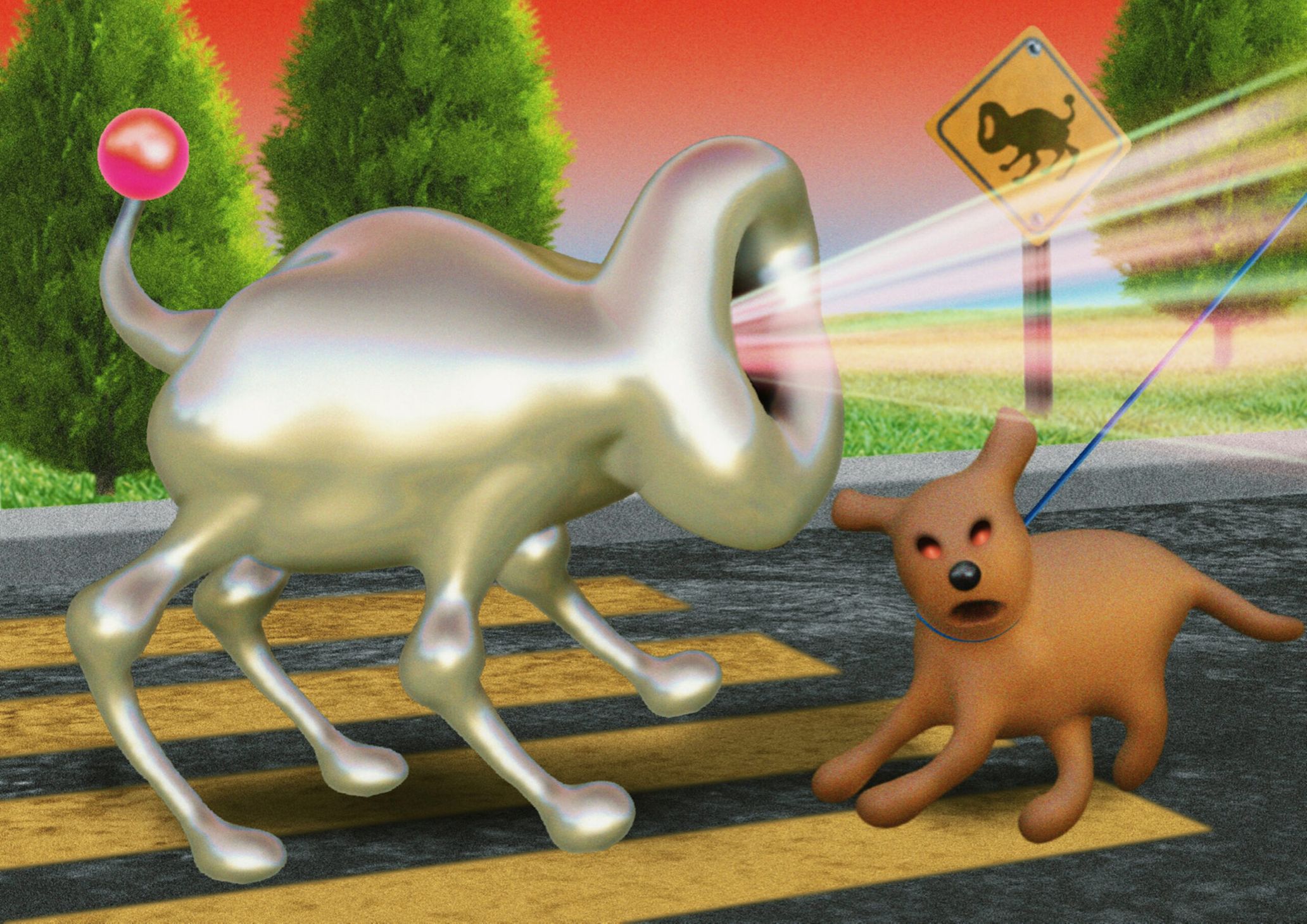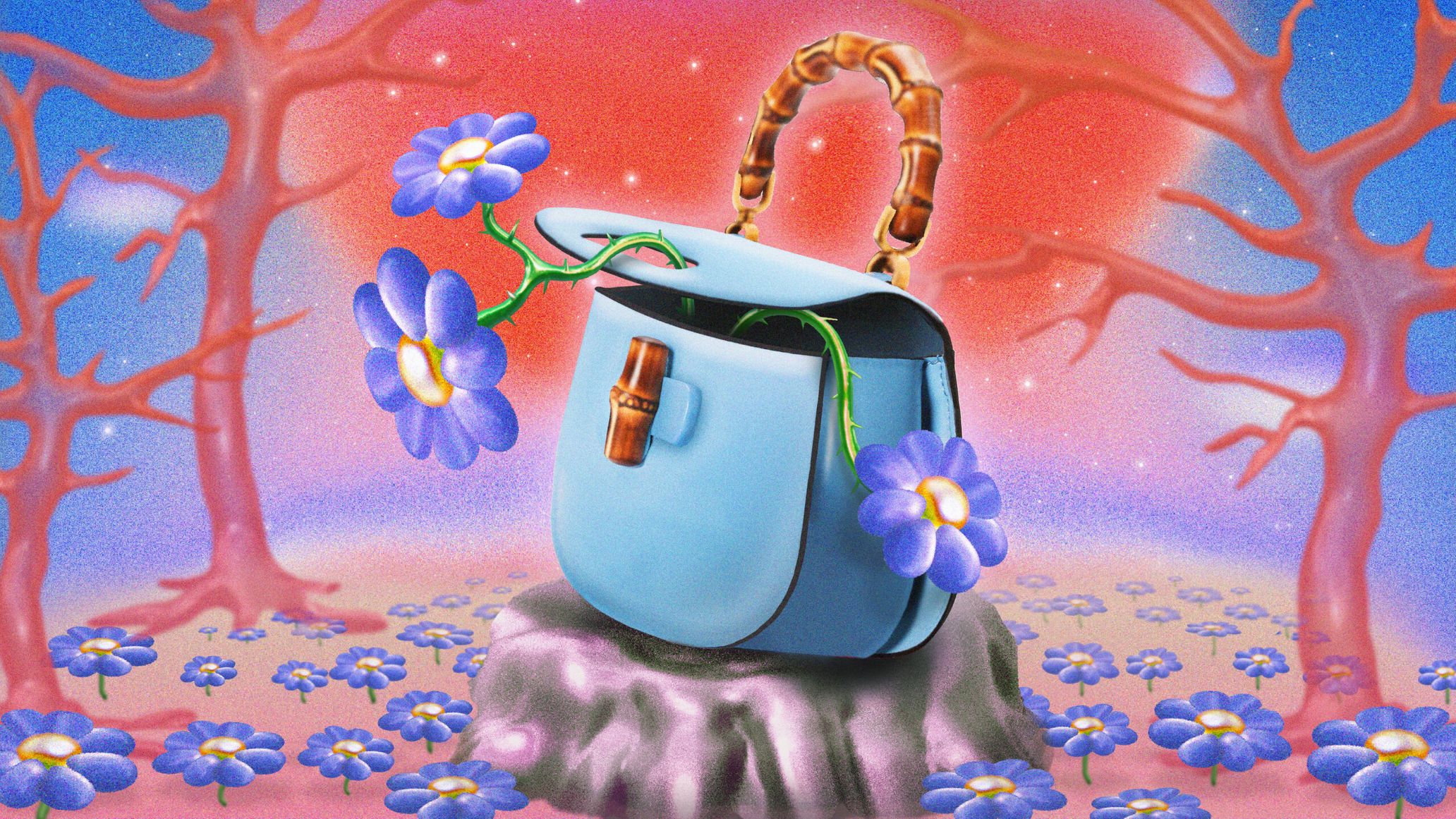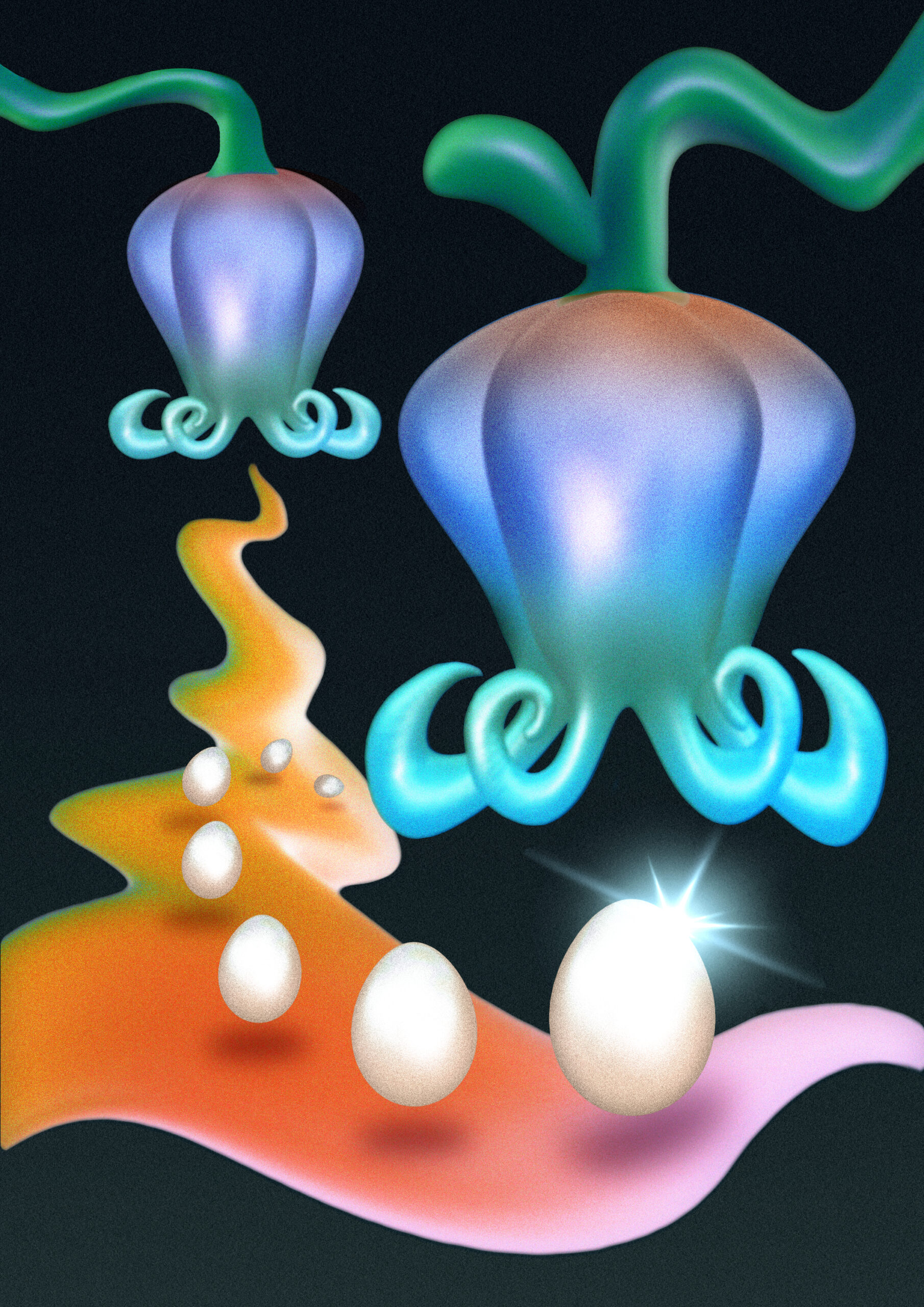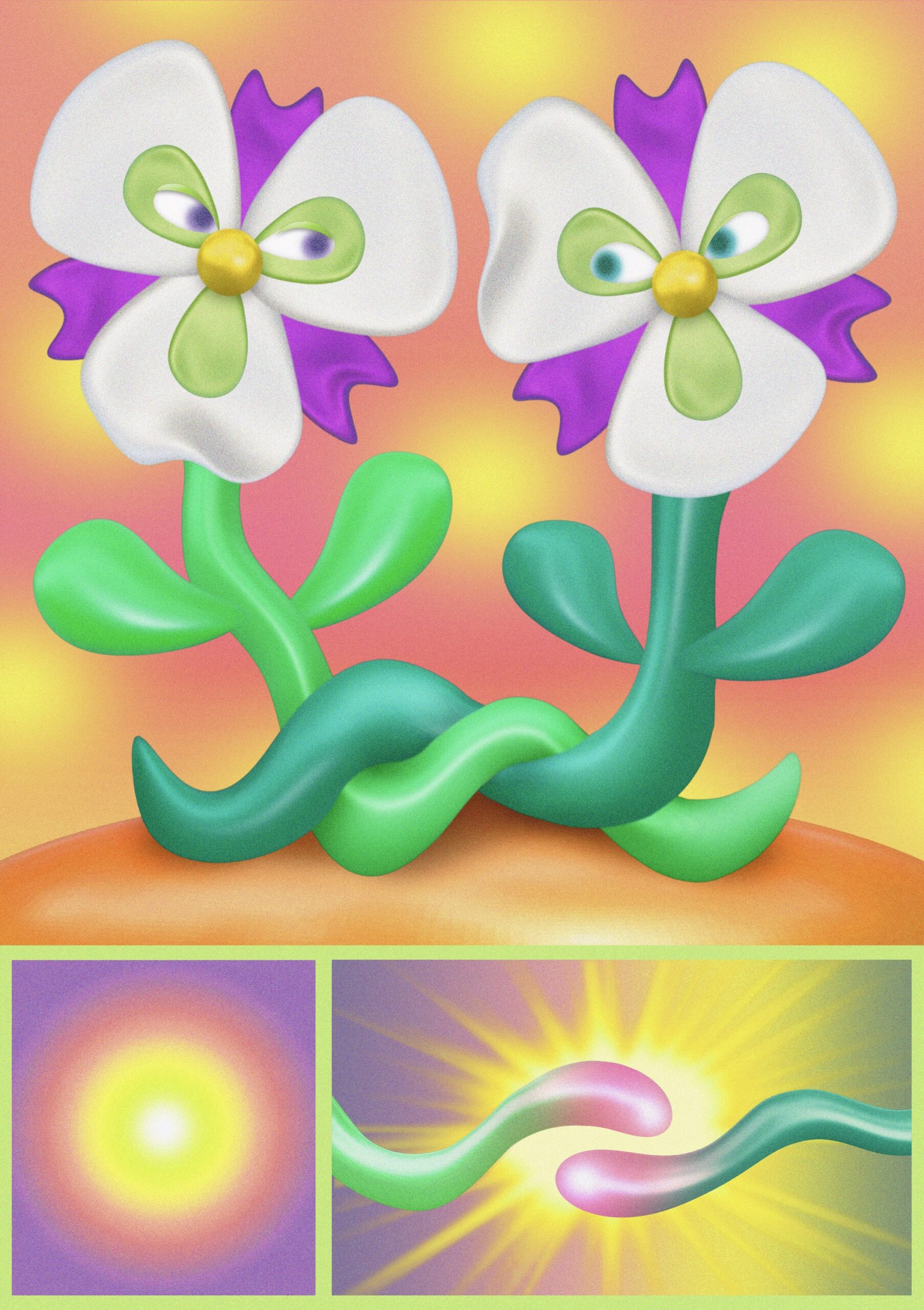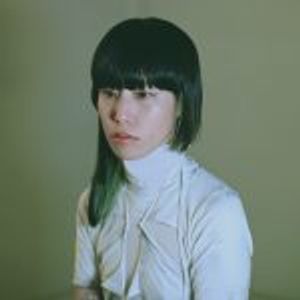Artist nico caught the attention of brands and curators after illustrations and animations of her fantastical plant and creature motifs and retro, CG-like textures spread gradually over Instagram. In 2021, she created the animation for “SueUNDERCOVER Meets Tokyo Millennials No.19” by Undercover, and was the only Japanese artist to showcase their work in the global digital campaign for Gucci’s Bamboo 1947 bag that was released in January. How does one create fantasy and characters that freely and continuously change while maintaining a balance between the motifs in the artwork and its story? She talks about how she started out, her creative influences, and her way of being a creator.
Using motif selection to pick a protagonist, then creating a strange world and story around it
–– Looking through your Instagram, it seems like you’ve been posting your work since around 2018. When did you first start seriously posting?
nico ito: I started posting seriously at the beginning of the pandemic, in the beginning of 2020. I graduated from the Scenography, Display, and Fashion Design Department of Musashino Art University in 2019. I had a part time job doing design, but I quit at the beginning of 2020 when the pandemic hit. While I was wondering what I was going to do next, I repeatedly posted my creative process on Instagram because I had so much time on my hands. Fortunately, that led to my work being shared all over. In a way, I was able to do what I did because of that time during the pandemic.
–– In your recent works, there are many characters that seem like they’ve metamorphosed. Do you draw these characters with a story in mind?
nico: I do a sort of “motif selection” process. I pick the main character who becomes the motif first, and then I usually decide what odd world or story that protagonist is going to be a part of. Of course there are different ways I start my creative process, too. But I didn’t just start thinking this way because of my creative process. I’ve played with my imagination a lot since I was a child. For example, I would line up candies by color and set them up in various ways, like “this one makes you panic when you eat it”, or “this one makes you happy when you eat it”, and then actually eat the candy to recreate the experience, over and over again.
–– I guess you can say that’s how the motif selection process began (laughs).
nico: I don’t do that anymore now that I’m an adult (laughs), but I think the idea is similar. I just love to think of backstories. I used to love game strategy books that introduced characters and game items.
–– As an example, can you explain the story behind this piece?
nico: I like to collect a bunch of random images online. Among them was an image of a robot dog. Robots are usually made to be smart, but this one scared me for some reason. From that feeling, I imagined a scenario in which domesticated robot dogs ensue chaos on the streets… That’s what I imagined while making this personal piece. It’s one of my favorite recent pieces.
–– What story did you have in mind for the Gucci Instagram campaign?
nico: I already knew I was going to be drawing a bag, so I developed a story from there. The idea was that in all three pieces, the bag would be that world’s king. For example, the animation piece is a scene from a sacred ceremony in which one of the blue spheres, inhabitants of this made-up world, is chosen to receive a beam of light and transform into a bag, or the king.
–– It seems like the protagonists in your works are characters who have eyes and noses or motifs that possess animal-like movements. I was wondering if you were also interested in the space and world that they live in.
nico: Yes, that’s right. I want to express things that aren’t clearly visualized, like the atmosphere of that world, whether there’s a character involved or not.
This is going to be another story from the past, but when I was a child, I used to play on this drawing software called Kid Pix. I really like the world of that software. It’s hard to describe in words; it’s trendy but disturbing, but not on purpose. In retrospect, it was the perfect balance, and was very cool. I’ve always wanted to express that disturbing atmosphere. I wanted to create something that would give people the feeling I had at the time, of “I’m having fun, but I sort of feel sick”.
I’ve also been very conscious of making my work appear timeless. I use 3DCG in my work. If I use that texture as it is, it naturally gives a “new” impression of the current era. But I choose to put noise on it to erase that sense of time.
“I want to be like the most played song among unknown artists”
–– I feel that presenting work on Instagram, for better or worse, requires people to post new content at a rapid pace. The same is also required from textures. As an artist, how would you like to position yourself in the future?
nico: It’s hard to describe, but…. I want to be like the most played song among unknown artists. Those songs might feel out of place, but they’re popular because they’re catchy, and they’re also timeless. In the same way, even if it feels a bit out of place, I want to create art that anyone from any era can look at and understand.
–– Do you take influence from music in your creative process?
nico: I’m heavily influenced by music. I often think, “I want to make something that goes with this song” while I’m listening to music. I have a playlist full of songs like that. The songs are of all different genres, but I think there’s a common thread among all of them. I played that playlist at my solo exhibition in 2021.
–– Were the works you presented at your solo exhibit conceived in a different way from your commercial work? I was wondering if there was a difference in showing what you draw on your desktop in an analog way.
nico: Most of the pieces I presented at my solo show were things I had made after the pandemic started. There weren’t many restrictions compared to my commercial work, so I just put everything in Blender without thinking. I created a lot by just stretching things out with my cursor; it was like kneading clay. Once I had an interesting shape, I’d add some eyes until it looked like a character. I only had print and video works at this solo exhibition, though. I’d like to display some 3D works at my next show.
–– What would you like to try in the future?
nico: There are a lot of things I’d like to try… For now, I just want to work hard at my jobs. And as always, I want to keep creating my personal works so that I can do another solo exhibition. Last time, I was so caught up in creating that I wasn’t able to express the character backgrounds and stories that I wanted to express. I want to be able to do all of that next time.
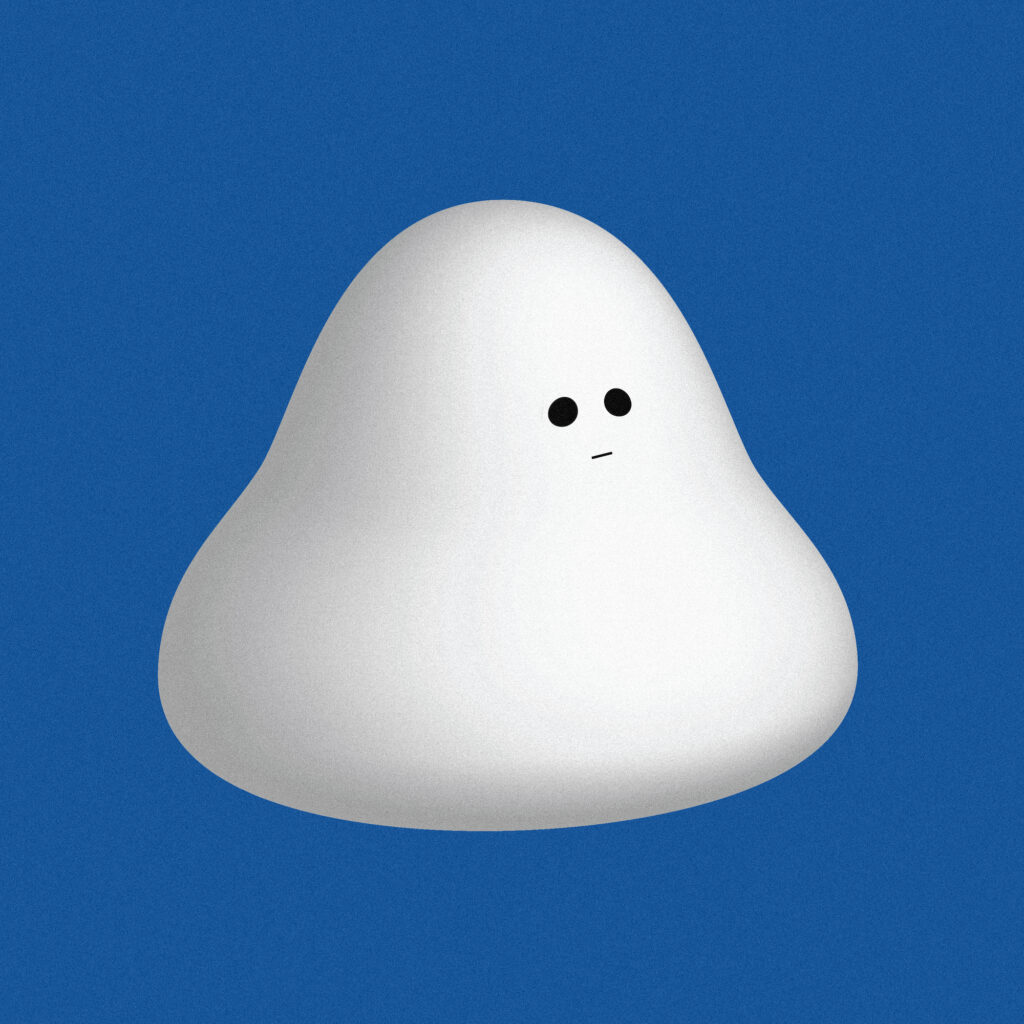
nico ito
Born in Tokyo in 1996. After graduating from Musashino Art University, Department of Spatial Design She is currently working as a freelance illustrator.
Instagram:@nicooos_n
Twitter : @nicooos_n
Edit Jun Ashizawa(TOKION)
Tranlation Mimiko Goldstein

